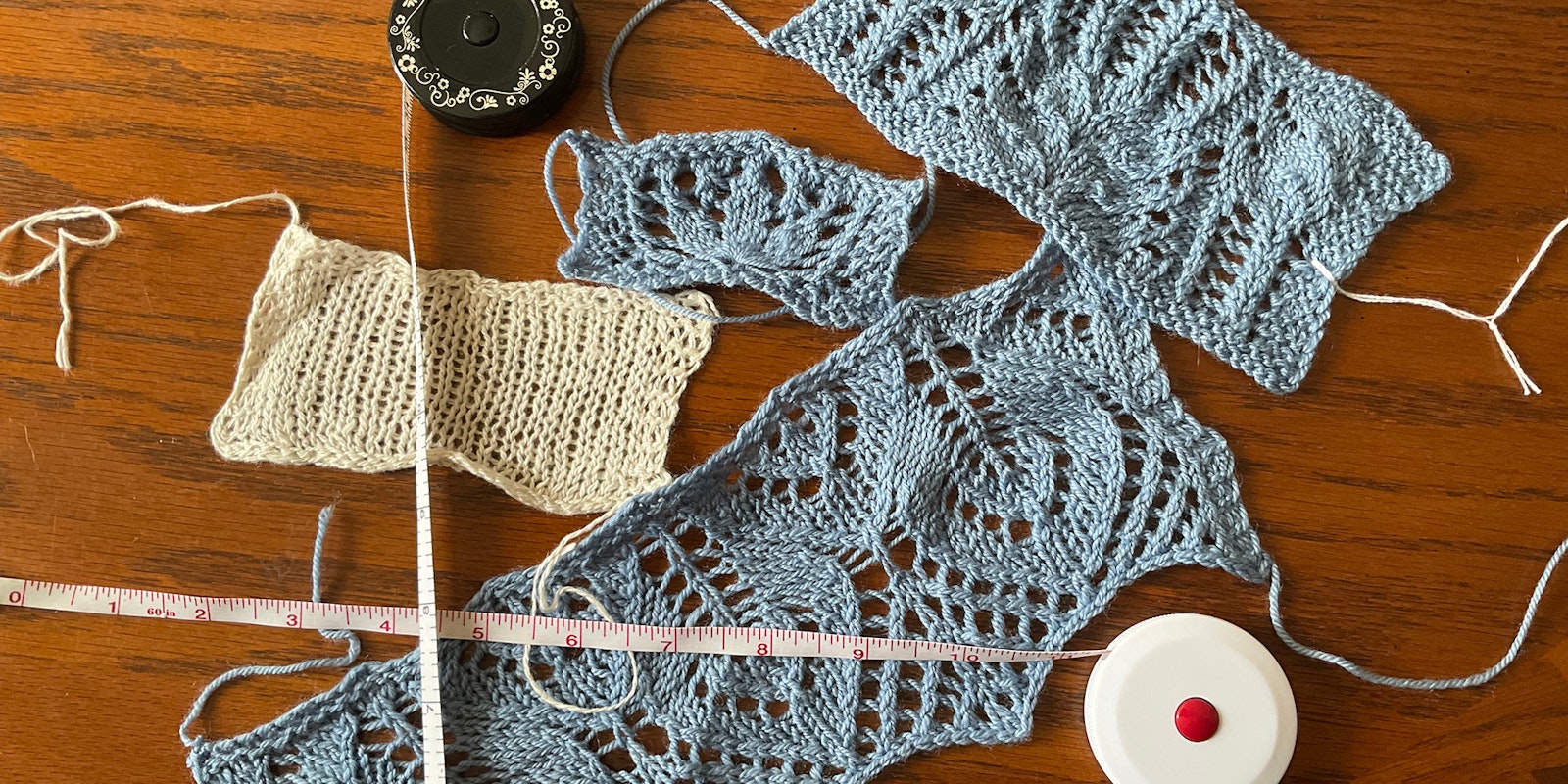Ask any group of knitters what their least favorite task in the craft is, and the subjects of swatching and gauge are bound to come up. I know from my own experience that the only swatching I do is to understand lace patterns and to see how much yarn is necessary for a repeat. However, to get a proper fit in a knitted garment, swatching and measuring gauge are vital.
Knitting patterns offer up a gauge measurement that shows the number of stitches and rows over a set measurement (usually a four-inch square) with the needle size and yarn used in the project. Upon knitting a swatch, the knitter measures the horizontal stitch count and vertical row count from their swatch, compares them to the pattern’s gauge, and adjusts tension and needle size accordingly to match the given measurements.
 Swatch knitted in stockinette stitch on size 5 needles
Swatch knitted in stockinette stitch on size 5 needles
While this approach works for most garments, Amy Gunderson’s Chamfer Cardigan is a bit different. Upon first look at the pattern, I thought measuring the diagonal row gauge as listed would mean in the direction of knitting, similar to a standard swatch. I learned that is not the case.
 The first 22 rows of the Chamfer Cardigan worked on size 5 needles
The first 22 rows of the Chamfer Cardigan worked on size 5 needles
The gauge measurement is still given over the standard four-inch square. However, the pattern also directs us to measure the row gauge on the diagonal. This is along the side of the piece, as shown above, rather than in the direction of knitting.
Another excellent point in the gauge information is to measure the swatch after blocking. It is always best to bind off your piece properly to wash and block for gauge, but especially so for the Chamfer Cardigan. As you can see above, leaving the swatch on the needles distorts the fabric. Lace isn’t the only structure that is altered by washing—cables will also behave differently once blocked. An added benefit to working a gauge swatch is that you learn the various elements of the pattern. With this sweater, understanding the special stitches and directions of the cables will be easier now that I have knitted the swatch and see how the elements work together.
We all want to jump feet first into that new project. Taking the time to knit a swatch is an important step to getting a great fit, especially when knitting in a new direction.
Katrina King is the assistant editor of PieceWork magazine, an avid crafter, and a continuing student of life.

